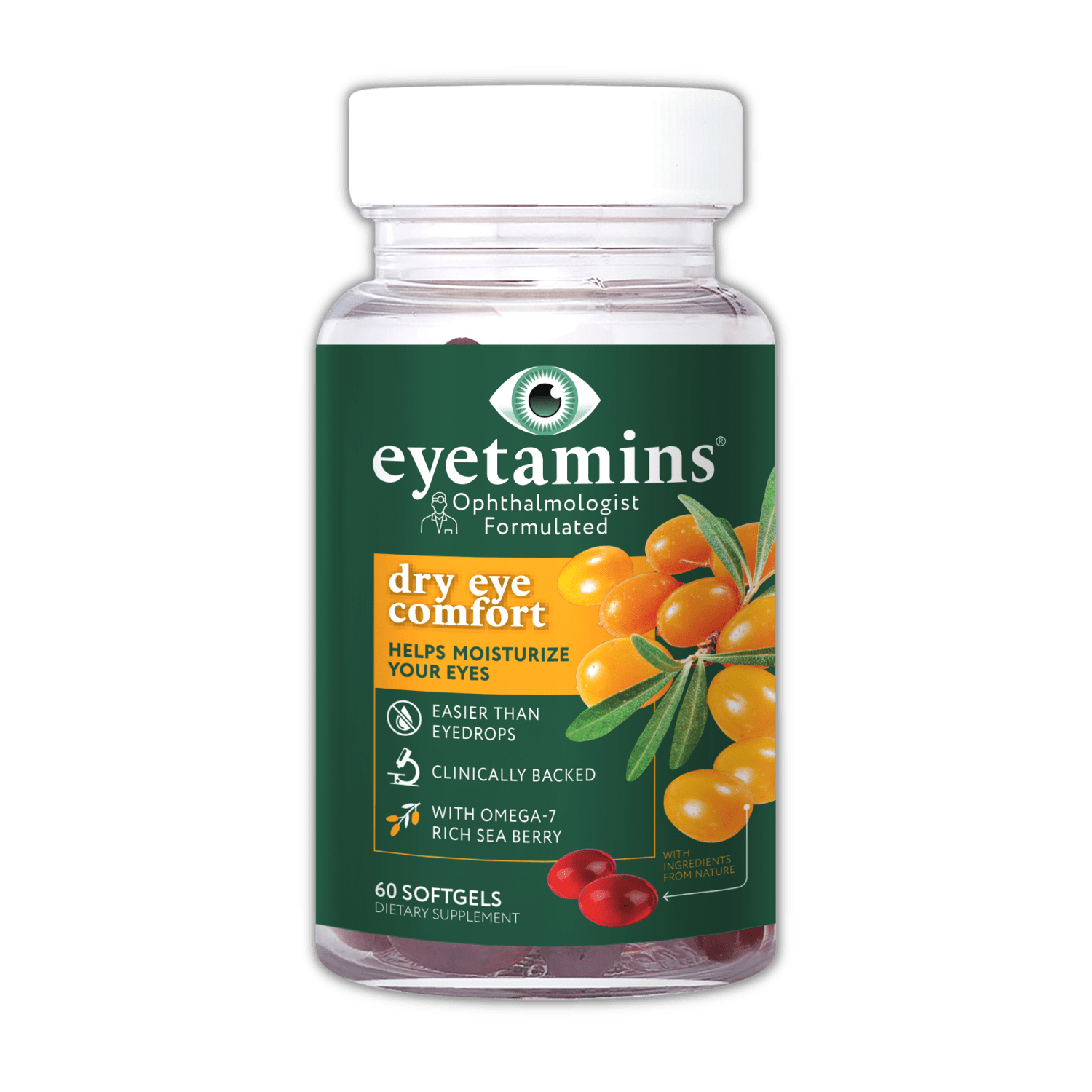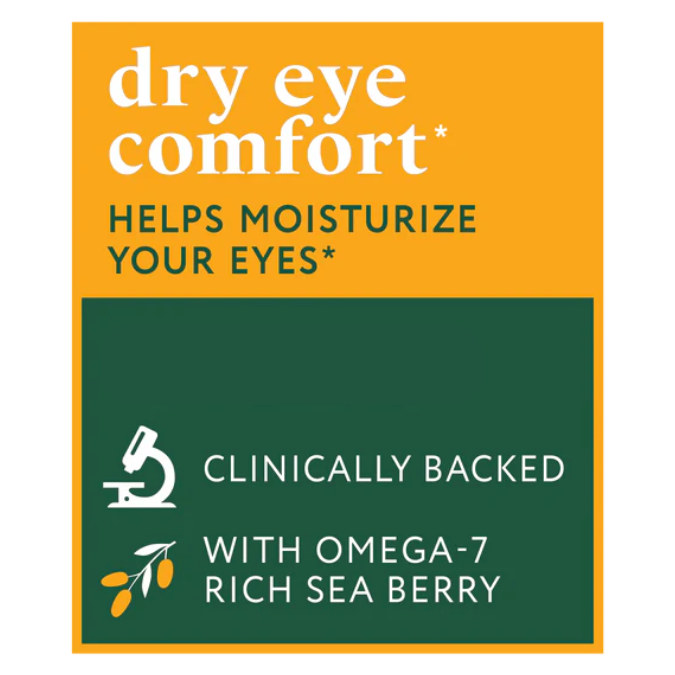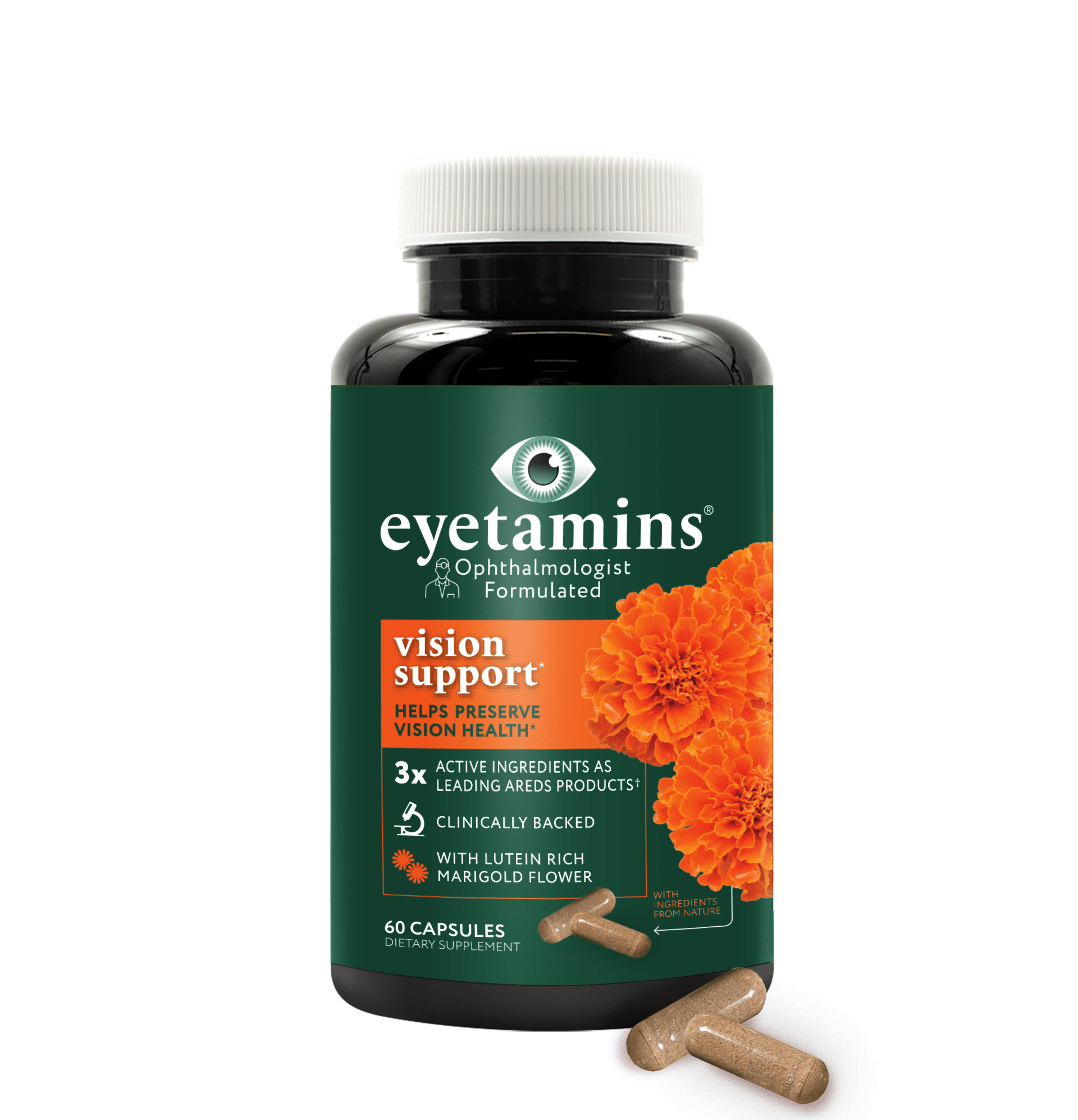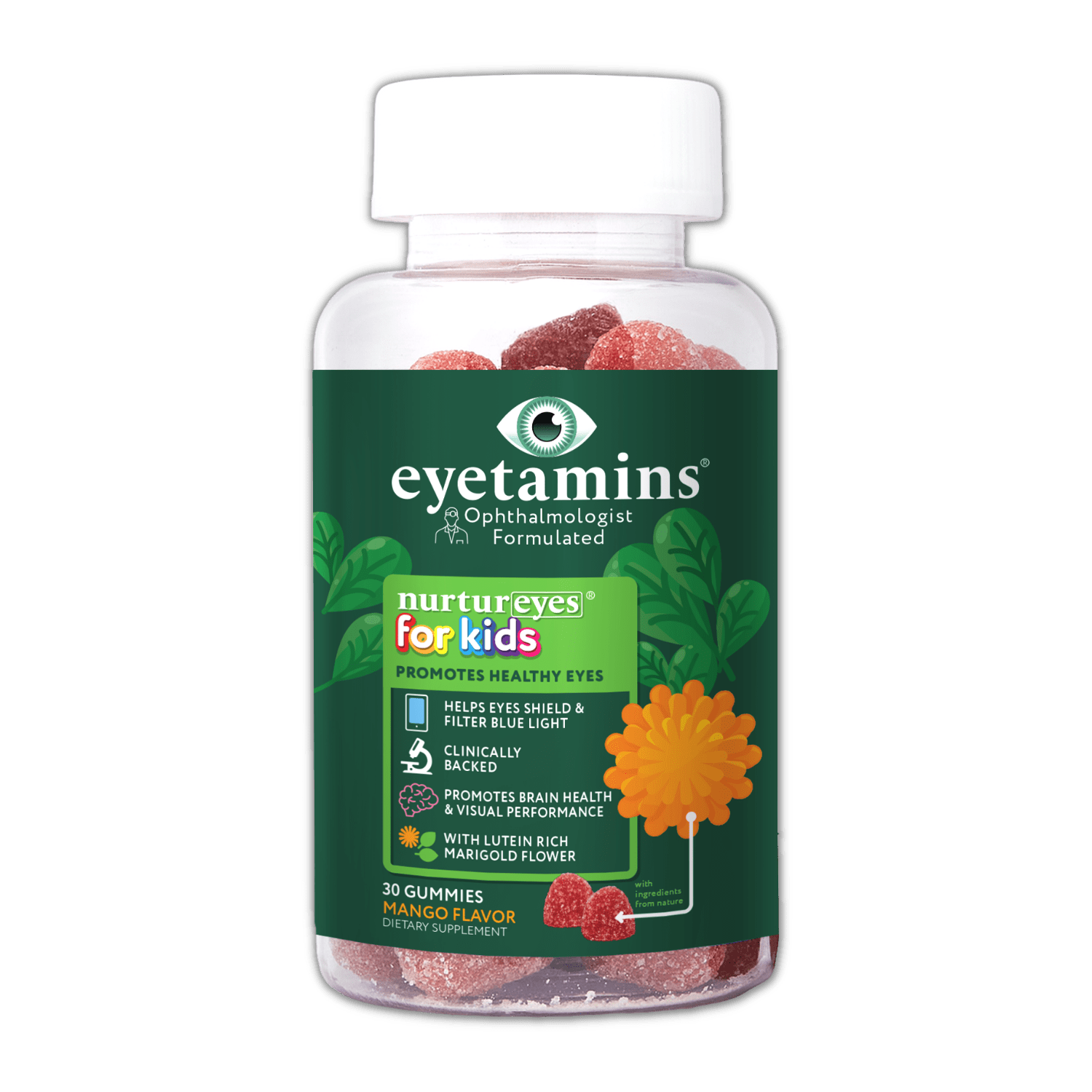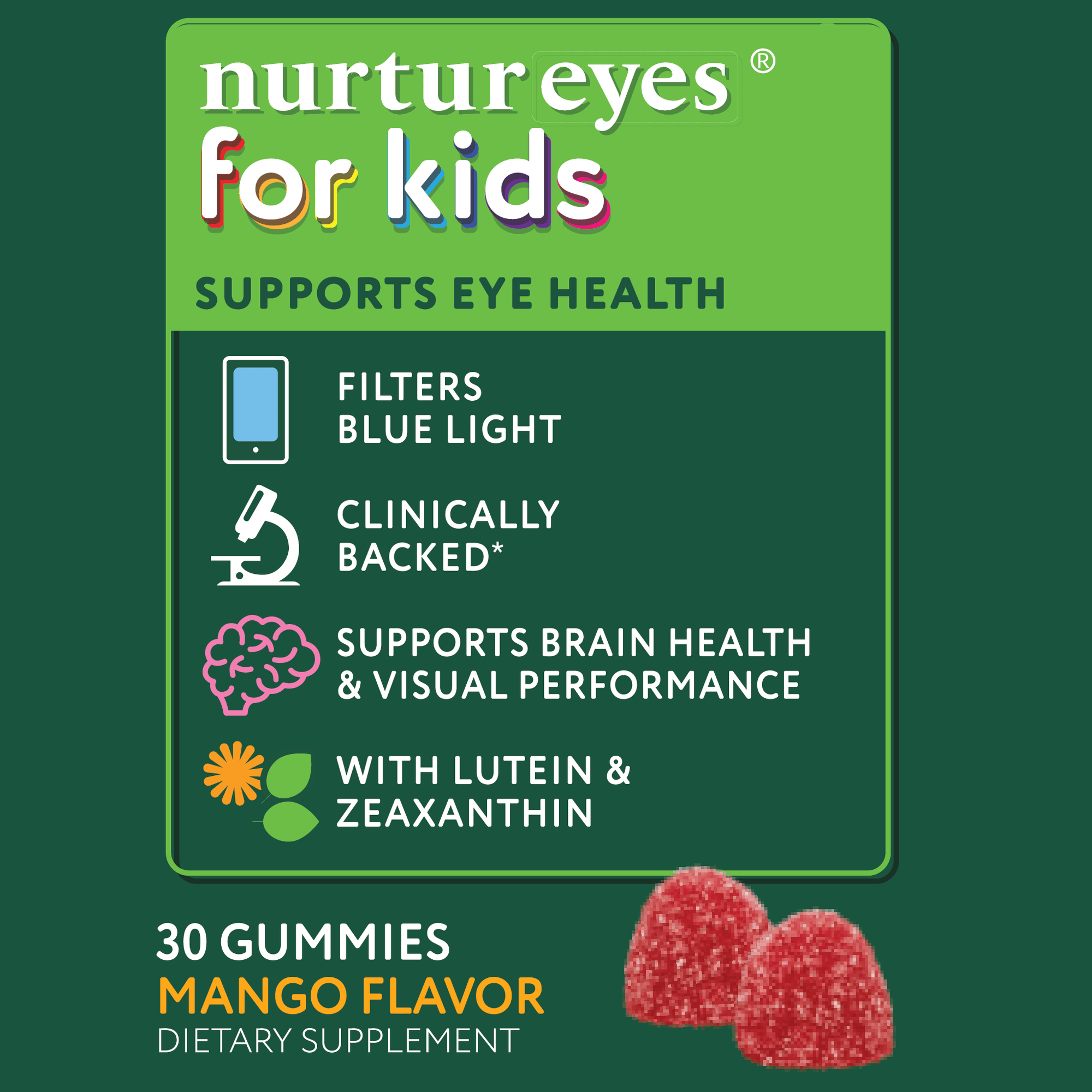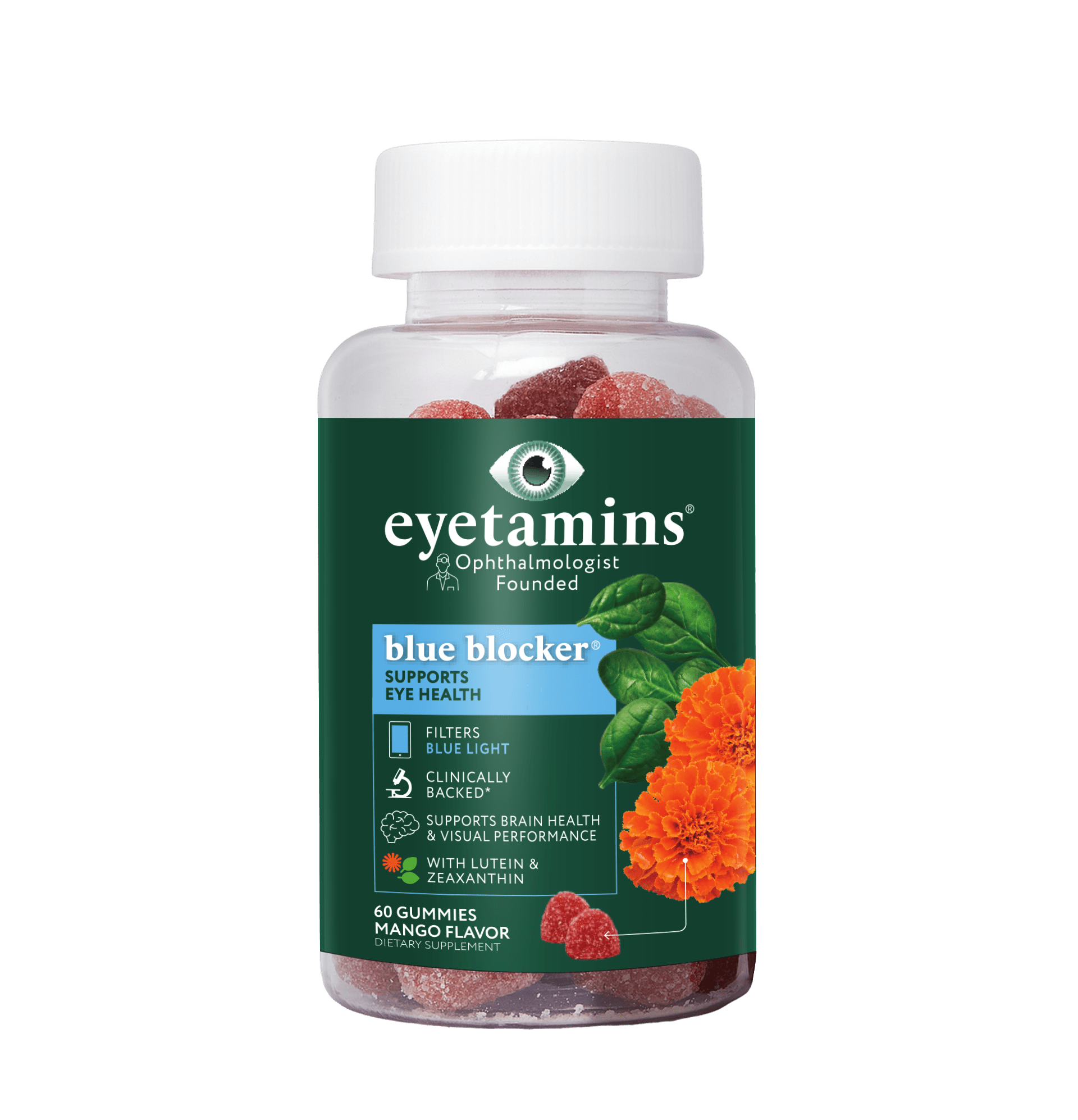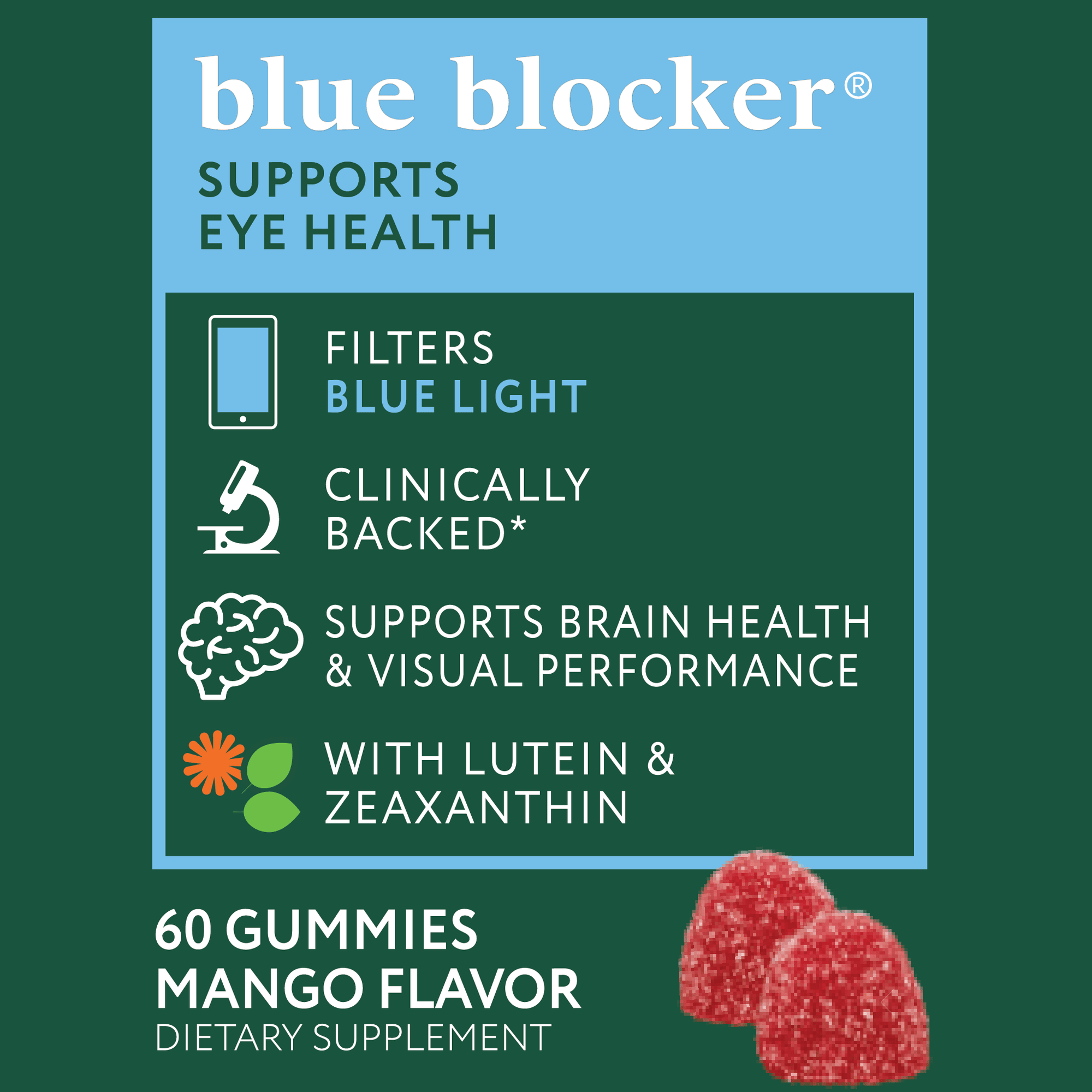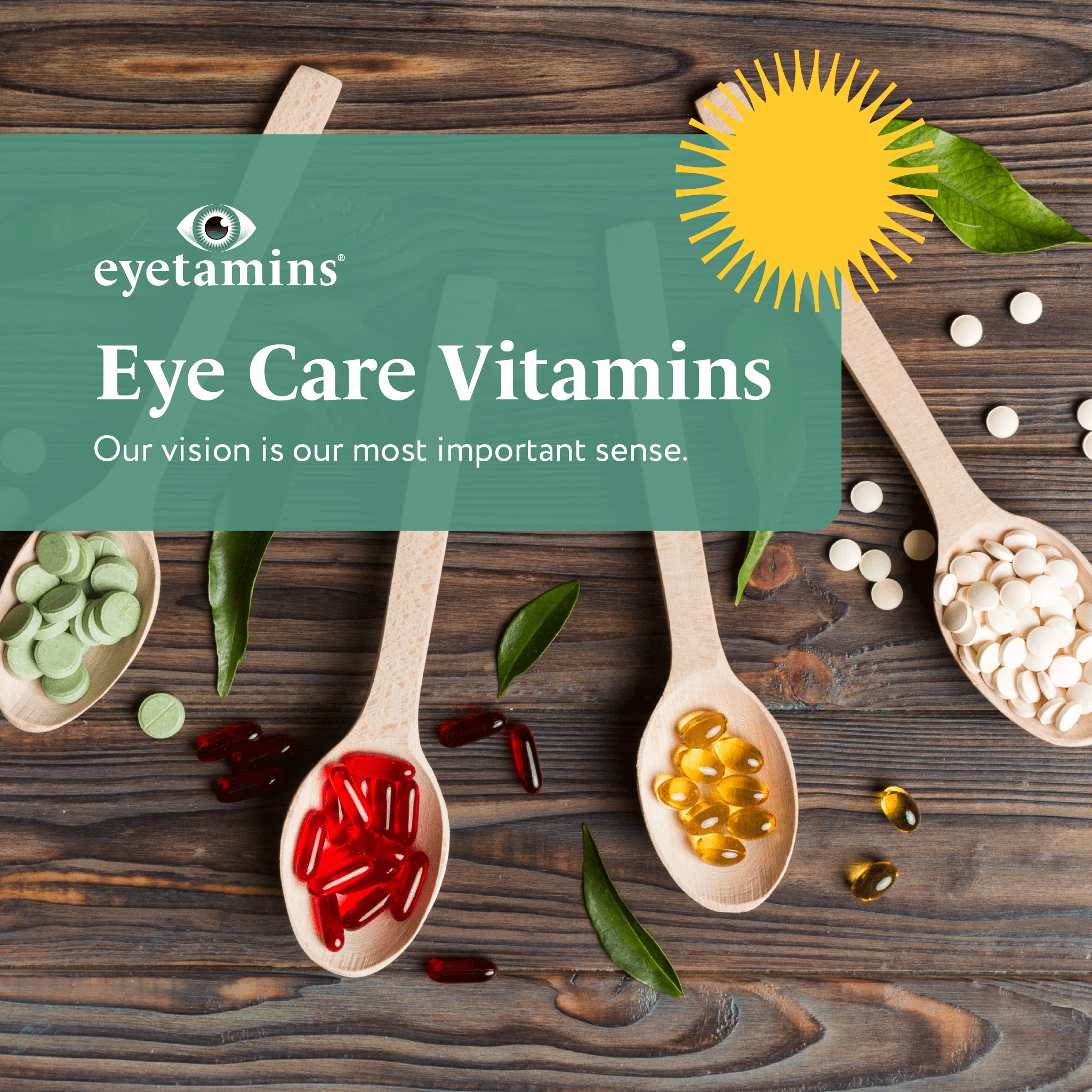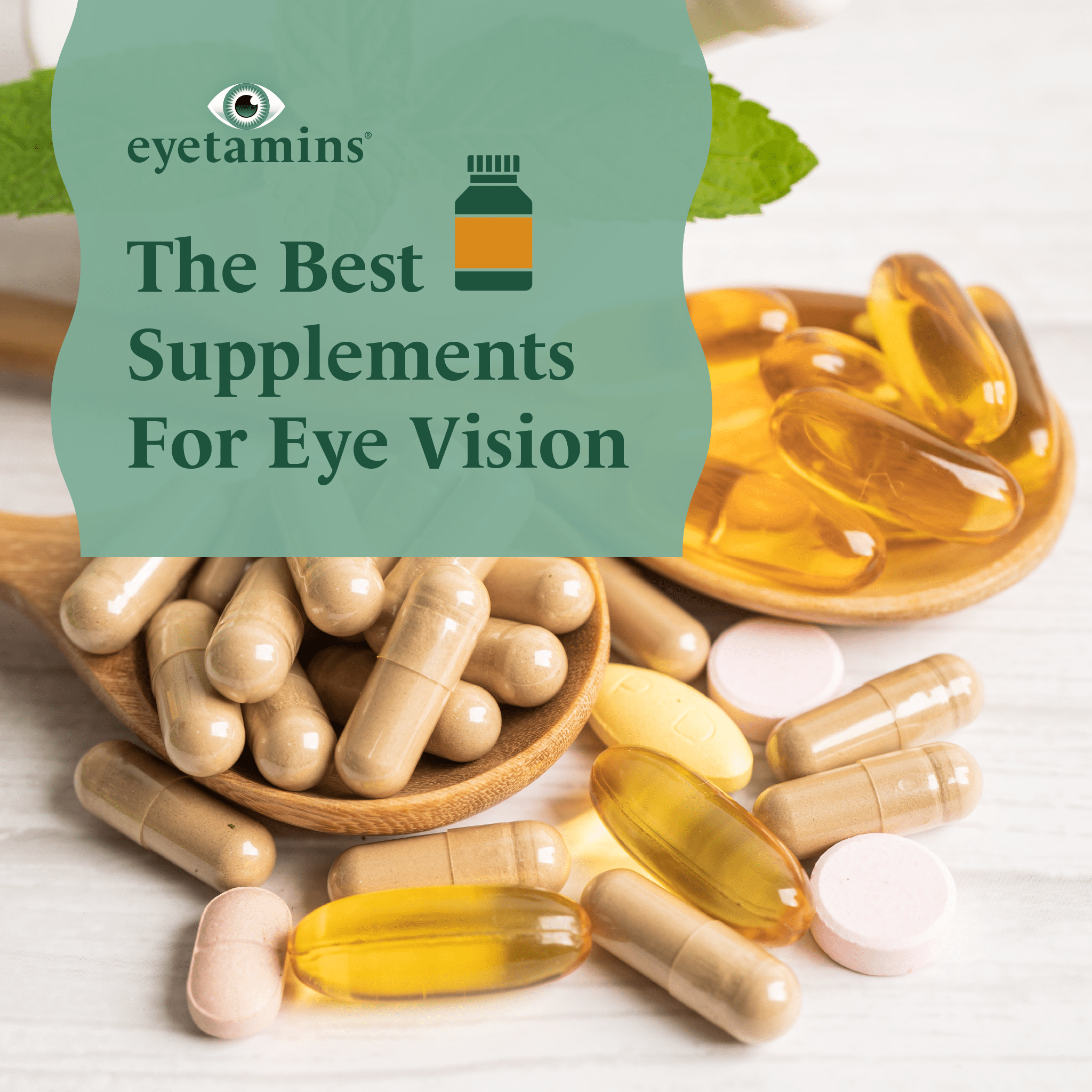· By Dr. Kaushal M. Kulkarni, M.D.
The AREDS 2 Study
Sight is such an important function in our daily lives and is sometimes taken for granted in our younger years. As we age, we begin to realize what a precious commodity the ability to see is, and the importance of sight becomes even more precious.
The National Institute of Health (NIH) is a very well-respected research institute in Bethesda, Maryland, in the USA. Their eye division, called the National Eye Institute (NEI), conducted a landmark clinical trial called the Age-Related Eye Disease Study 2 (AREDS 2), which studied a variety of supplements and their effects on those affected by a condition called age-related macular degeneration (AMD). In this article, we will clearly define the disease, discuss the trials and findings of the AREDS 2 study, and what you can do about it.
Age-Related Macular Degeneration
The number one cause of permanent loss of sight in people 60 years and older is age-related macular degeneration. About 2 million Americans suffer from advanced age-related macular degeneration, with an astonishing 8 million more that are at risk. As the name suggests, the disease is brought on by age. This is an ocular disease that occurs when the central part of your retina, the macula, breaks down. This gets gradually worse over time. It affects the area of the eye that provides central vision, which is essential for reading, driving, and recognizing faces. Though the disease doesn’t usually cause blindness, it commonly seriously impairs the ability to see. There is another form of macular degeneration that affects children and young adults, called the Stargardt disease, or juvenile macular degeneration. However, here we will focus only on the AMD variety.
Types of Age-Related Macular Degeneration
There are two main types. They are:
- Dry: This form of AMD is identified by yellow deposits called drusen in the macula. Having only a few small drusen may not have any effect on your sight. However, the drusen can grow and multiply, causing your perception to become dim or distorted. This is especially apparent when you try to read. Eventually, the cells that are sensitive to light in your macula get thinner and die. The atrophic form produces blind spots which could lead to a loss of your central vision.
- Wet: In this form, blood vessels grow under your macula and leak blood and other fluid into your retina. This distorts your ability to see straight lines that instead look wavy. It can also cause blind spots and eventually loss of sight. The leaking of the blood vessels can form a scar which can cause a permanent loss of central vision.
The dry form of age-related macular degeneration is the most common, but it can turn into the wet form. The wet form of this disease is present in only 10% of those affected. You must attend ophthalmologist visits regularly if you have the disease, to prevent further loss of function. He or she will advise you on the best treatment plan for your case. If you are unsure if you have this disease, we will now go over some symptoms to look for.
Macular Degeneration Symptoms
Macular degeneration may be difficult to detect in the early days. Many people do not even obtain a diagnosis until the problem gets worse or affects both of the eyes. Here are some common symptoms to watch out for to prevent this from happening:
- Deteriorating vision. This could include blurriness and general lack of clarity. The fine print may be hard to read, or you may find it difficult to drive.
- Your central vision has dark, blurry areas
- Wavy, distorted central vision
Now that we have some of the basic information about this disease, let’s talk about some exciting advancements happening in the supplement world. We will go over the studies that have provided a lot of information about what can be done to possibly stop the disease in its tracks.

The Age-Related Eye Disease Studies
In 2001, the NEI (established by the National Institute of Health) concluded a five-year-long trial called the Age-Related Eye Disease Study (AREDS) or AREDS study.
Here’s the AREDS study summary:
The goal was to examine the effects of a high-dosage mix of nutrients on people suffering from age-related macular degeneration. The original formula incorporated high daily doses of vitamins C and E, beta carotene, zinc, and copper. The study determined that the vitamin combination was able to slow and reduce the risk of advanced AMD. Beta carotene, however, was found to contribute to a higher risk of lung cancer for smokers. It was also found that the high zinc dose could cause some minor side effects in some people, including stomach upset.
AREDS 2 Study Summary
In 2006, the NEI was back at it again to try to improve the original formula. They decided to add omega-3 fatty acids (DHA and EPA), lutein, and zeaxanthin, while removing beta carotene, and reducing zinc. In the AREDS 2 study, researchers wanted to see how different combinations of the supplements measured up.
Omega-3 fatty acids are produced in plants, such as algae, and can be present in fish like salmon. The study focused on the omega-3 fatty acids docosahexaenoic acid (DHA) and eicosapentaenoic acid (EPA). DHA is found in the retina in high amounts, indicating that it is important for visual development as well as retina function. Previous studies suggested that the retina may degrade over time due to not having enough DHA in the diet.
During the AREDS 2 study trial, the National Cancer Institute funded two studies that discovered that beta carotene may increase the risk of lung cancer in smokers. However, the researchers were able to come up with a good solution to this problem. Beta carotene, lutein, and zeaxanthin are all phytochemicals going by the name of carotenoids. Carotenoids are structurally related to vitamin A. Since lutein and zeaxanthin are in the same family of nutrients, they were substituted instead. Not only do they serve important purposes in the retina, but they also do not seem to have any link to an increased risk of cancer.
During the AREDS 2 study, there were four combinations. The participants were told to take one of them daily for five years. One was the original AREDS formula:
- 500 mg vitamin C
- 400 IU vitamin E
- 15 mg beta carotene
- 80 mg zinc
- 2 mg copper
The other combinations included taking the original formula of the AREDS vitamins and minerals with no beta carotene, the original recipe with lowered zinc (25 mg), or the original recipe with no beta-carotene and low zinc. Each group additionally took one of four supplements. These supplements or the AREDS 2 vitamins included lutein/zeaxanthin (10 mg/2 mg), omega-3 fatty acids (1,000 mg), lutein/zeaxanthin, and omega 3s, or a placebo. The progression to advanced macular degeneration was done through examination of photographs of the retina, or the treatment of the disease.
AREDS 2 Study Results
In 2013, the research findings of the AREDS 2 study were published. It was found that omega-3 fatty acids DHA and EPA do not improve the formula. The antioxidants lutein and zeaxanthin also did not have an overall effect when combined, but they were safer than beta carotene. Those participants who took lutein and zeaxanthin, but not beta carotene, had an 18% lowered risk of developing advanced AMD during the five years. This was compared to the participants who took the original combination with beta-carotene.
It was also determined that the participants who had low levels of lutein and zeaxanthin at the beginning were up to 25% less likely to develop an advanced form of the disease when taking 10 mg lutein and 2 mg zeaxanthin daily. This was compared to those participants who had similar original levels but did not take those supplements.
The AREDS 2 study found that there was a vitamin combination that could help those who had a lot of drusen. This could also help people who have lost some ability to see in one or both eyes due to macular degeneration. The following AREDS 2 formula may help these people in particular to lower their risk of getting late-stage or wet AMD:
- 500 mg vitamin C
- 400 IU vitamin E
- 10 mg lutein
- 2 mg zeaxanthin
- 80 mg zinc
- 2 mg copper
Keep in mind that these supplements do not cure the disease. However, they may help slow it down for those who already have early to mid-stage age-related macular degeneration. We would now like to discuss these ingredients which were found to have the most favorable results in the AREDS 2 study, and why they can be beneficial to those afflicted by this disease.
-
Vitamin C:
This vitamin is a powerful antioxidant that can protect your eyes from free radicals. Free radicals are molecules produced when your food is broken down, or when you have been exposed to smoke, pollution, or radiation. These free radicals may be associated with the contraction of heart disease, cancer, and other diseases. Vitamin C disarms the free radicals or oxidants that end up damaging cells. The vitamin is a vital ingredient to make collagen, a protein that protects your ocular structure, especially the cornea and sclera. It is said to counter inflammation, which researchers believe might be linked to AMD. Foods containing high amounts of this vitamin are citrus and tropical fruits, bell peppers, kale, and broccoli. Incorporating these into your daily intake is a great choice for your ocular health.
-
Vitamin E:
This vitamin is another powerful antioxidant that helps protect your cells from free radical damage. To maintain proper ocular health, it is important to have a diet containing vitamin E. Some foods including this vitamin include nuts, seeds, cooking oils, salmon avocado, and leafy greens. The recommended daily dietary allowance of vitamin E for adults is 22.4 IU. This is the amount that is for most people to remain healthy. However, the combination in the AREDS 2 study comprised 400 IU per day. Both of the trials found no issues associated with the 400 IU dosage. However, it is important to understand that taking over 1,500 IU per day of natural vitamin E or 1,100 IU per day of synthetic vitamin E can have an increased risk of bleeding. This includes brain bleeding. It is also possible for this vitamin to interact with some medications. These could include blood thinners, chemotherapeutic agents, and drugs that lower lipids. Please consult your doctor before taking these supplements.
-
Lutein and Zeaxanthin:
As previously stated, lutein and zeaxanthin are carotenoids, which are nutrients from plants that include beta carotene. These can be found in leafy green vegetables. You can also find them in egg yolk, yellow corn, orange or yellow peppers, kiwi, grapes, zucchini, and squash. Carotenoids can also be stored in animal tissues, and therefore found in animal-based foods at low levels. After the carotenoids are consumed, they can accumulate in the retina and the lens. They may act as natural antioxidants by absorbing blue light and ultraviolet light that can be damaging to the eye and many of the best vitamins for your health will have these.
-
Zinc:
Another potent antioxidant contributing to the vitamin mix is zinc. One function of this mineral is to help the body absorb and use vitamin A, a crucial vitamin for clear sight. Zinc also has antioxidant properties needed by multiple enzymes. It can be found in vegetables, grains, and meat. However, vegetables and grains have other molecules that go against the absorption of zinc. For this reason, it is better to take zinc in supplement form, without the competing molecules that reduce its bioavailability. The first trial had the zinc dosage at 80 mg and was determined to have better results than the placebo. Though it was an important part of the formula, some thought that the dose was too high. The second trial did not have a placebo control for zinc. In the AREDS 2 study, participants were given an option to take the original combination (containing 80 mg zinc), or a modified version which contained 25 mg zinc. There did not seem to be a difference between the effects of these two amounts, though the higher zinc dosage was said to cause a slight upset stomach in a few participants.
-
Copper:
Copper, or cupric oxide, is not only helpful in the conduction of electricity, but it is also an essential nutrient for the body. It teams up with iron to help the body in the formation of red blood cells. Additionally, it aids in the maintenance of bones, nerves, blood vessels, and the functioning of the immune system. Having the recommended amount of copper in your diet may even help prevent heart disease and osteoporosis. Some foods containing copper include spirulina, chocolate, lobster, leafy greens, liver, oysters, and shiitake mushrooms. The function of copper is to balance the zinc content and prevent copper deficiency anemia. Taken at high levels, zinc is known to cause a copper deficiency due to the two competing in the intestines for absorption. There was shown to be no evidence of anemia in the patients who took the formula with zinc. Additionally, the 2 mg copper showed no evidence of being harmful. Therefore the researchers conducting the AREDS 2 study concluded that the use of copper was safe and may have helped balance zinc’s effects.

More Research For a Promising Future
Remember to always talk to your doctor about any supplements you are interested in taking. Only take the AREDS 2 supplements if your ophthalmologist approves them. Our Vision Support supplement contains many of the nutrients tested in the AREDS 2 study, including vitamin C, vitamin, E, lutein, zeaxanthin, and zinc. We have also included saffron and bilberry. Saffron has been tested in clinical studies showing the possibility of anti-inflammatory effects that can be helpful for early-stage age-related macular degeneration patients. And due to bilberry’s high flavonoid content, it also shows promise for making a difference in the treatment of this disease.
Since the trials, more and more research is being conducted. New research has shown that a doubling of the amounts of lutein and zeaxanthin may have additional beneficial properties, including the decreasing of macular pigment. This in turn may strengthen the macula or the center part of your sight.
As stated before, lutein and zeaxanthin are natural blue light filters. As a result, they are also said to improve sleep and eye strain due to the blocking of blue light. Not only that, we have partnered with Lutemax 2020, which is one of the highest quality sources of lutein and zeaxanthin in the world. Its manufacturers control the quality of their ingredients as well as support the local farmers.
We created what is, in our opinion, the best AREDS 2 formula on the market to protect your ocular health. It’s called Vision Support. We are proud of the selected ingredients - which include the AREDS 2 eye vitamins - we’ve curated for our product. These ingredients are some of the best in the world, which may help stop the progression of age-related macular degeneration, along with so many added benefits.


